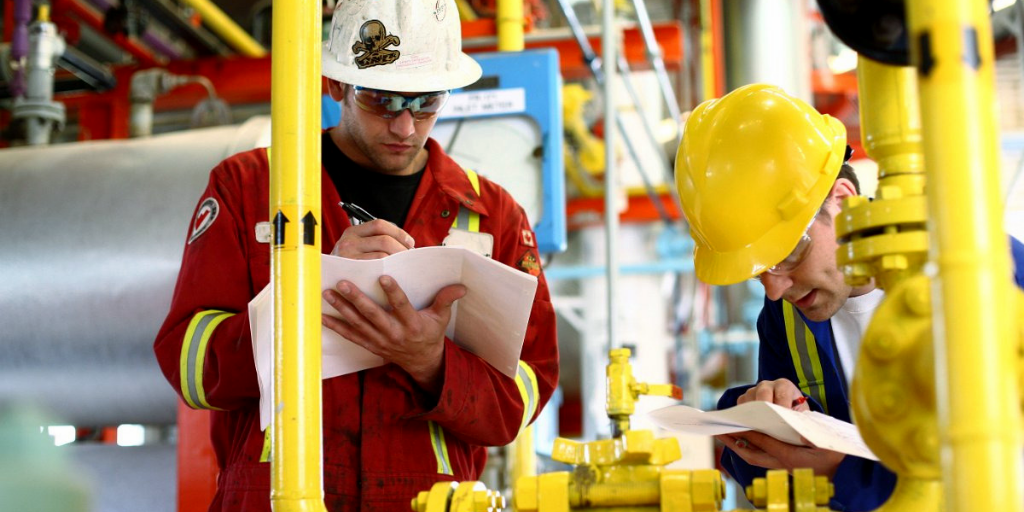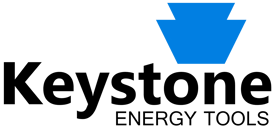
Working on an offshore oil rig is a hazardous job even under the best conditions. Roughnecks, we salute you. That’s why smart companies put such a strong emphasis on safety. Thanks to a growing “safety first, job second” culture, offshore oil rig fatality rates have decreased steadily over time, according to the CDC.
Still, whether it’s the result of exposure to hazardous chemicals, falls, fires, explosions or contact with equipment, oil rig injuries and fatalities continue to occur.
Here are ten ways to prevent them.
1. Instill a Safety-first Mindset
Ensuring workplace safety, particularly on oil rigs, must be a top priority that embodies the mindset, attitude and behavior of workers, supervisors and managers alike.
As such, it’s in your best interest to consistently remind everyone on the rig — both employees and subcontractors — of the importance of maintaining a safe work environment, which includes following all safety rules and regulations and keeping alert to possible hazards.
Leadership who “walks the talk” and builds organizational trust are always helpful in setting a standard for safety. If management commits to safety, workers will follow suit. Workers won’t buy-in, however, if they don’t see policies and procedures being followed by their superiors.
2. Require Orientation And Develop An Effective Emergency Response Plan
All new and transferred rig workers should undergo a mandatory orientation, like SafeGulf or IADC RigPass, before being allowed on the rig floor. Such orientation helps employees and contractors become familiar with company and rig operational policies, expectations and worksite rules, thus producing a safer work environment.
Perhaps the most obvious and the most overlooked of safety procedures, a smart, strategic emergency response plan, especially during hurricane season, isn’t as simple as drawing one up and never practicing it.
You should develop a plan based on the workflow on the rig, which will differ depending on the group, the rig, and even the weather. Roughnecks know a hurricane in the gulf is not a matter of if, but when.
There is no one-size-fits-all solution for rig safety. ERPs will vary depending on the weather conditions, the progress of a drilling operation, and the number of people on the rig at any given time. Develop plans accordingly.
Another important part of your emergency response plan should include a plan for crisis communication. Using an app such as the Crisis Communication App developed by Incentrick could literally save lives during an emergency.
3. Train Workers Consistently
Following orientation comes training, and that’s not a one-time event but an ongoing proposition. It includes instruction on the machinery and equipment in use as well as on safety procedures.
Providing consistent training for employees demonstrates your commitment to safety and is yet another way to instill a safety-first mindset.
4. Wear Required Personal Protective Equipment And Work In Well Lit Areas
It is essential to have the right tools for the job.
All sites require mandatory personal protective equipment (PPE), including safety glasses, hard hats, gloves, steel-toed boots, respirators and fire resistant clothing. That doesn’t mean, however, that all rig workers wear them.
A good rule of thumb: If you do not wear the right PPE, you are not allowed on site.
Quality protective gear is essential to avoiding injury. It’s better to wear the equipment and not need it than not to wear it and wish you had.
Another thing about living at sea is that it’s often very dark – anytime a storm hits, anytime the sun goes down, anytime a light goes out inside. It can get dark quickly, and in an environment like an oil rig, where even the smallest feeling of claustrophobia can be exacerbated, darkness makes users more prone to accidents.
That’s why reliable lighting is so important, especially in low or confined areas. Installing easy-to-see, easy-to-use lighting with customized safety signage helps everyone do their jobs better and warns them of potential hazards.
5. Implement a Positive Reporting Process
Building a safety-first culture is easier when employees feel the freedom to report concerns and believe management will take them seriously. Instead of responding negatively (or even acting punitively) to employees who report potential hazards, reward them for their efforts.
The reporting process should also include the right to stop work when a possible safety hazard is detected. While it’s not popular to stop the job, a safety-first mindset means that protecting someone from a potentially life-threatening situation trumps production every time.
Related resource: 5 Rig Safety Precautions You Need to Follow
6. Build a Community of Trust and Respect
Safety training should always involve a human element. That means facilitating ways for workers to get to know one another. Doing so will build a sense of camaraderie, trust and mutual respect.
As workers form personal relationships, it stands to reason they will look out for each other’s best interest and be more willing to ask for help, obey rules and seek advice in making decisions — all of which leads to overall safety enhancement.
7. Communicate Safety Regularly
Holding weekly or monthly safety talks is an excellent way to instill a safety mindset among workers. Rather than just lecture, however, use interactive small group discussions to involve everyone, and allow time for questions.
Other ways to communicate safety is to make safety policies available online and on paper and use your intranet to share best practices, updates and news.
8. Educate Subcontractors
Safety must be the chief concern of everyone on the rig, and that includes subcontractors. Select only those whose safety record exemplifies that priority and refuse to bring anyone on the rig which doesn’t. Take them through the same orientation and training that you would expect from your employees.
9. Conduct Routine Housekeeping On Equipment And Work Areas
Keep floors, pathways and work areas clear of unnecessary items to prevent trips, falls and struck-by hazards. Also, clean up drilling fluids that may collect on the rig floor during pipe handling operations, and display signage that directs workers to emergency and safety equipment, to combat hazards quickly.
10. Keep Machinery Well-maintained
Conduct regular maintenance checks of machinery to prevent premature failure, which could present potential hazards, and then repair or replace damaged or inoperable parts and equipment quickly.
While working remotely, it is important to understand that machines and instruments are your lifeline back to civilization.
Machines are often very temperamental. Accidents and injuries that result from the improper handling or maintenance of energized or mechanical equipment can be reduced via proper training and regular checkups and maintenance.
Putting workers at risk due to a worn out part that could break at any moment is irresponsible and unnecessary. Maintain the integrity of the equipment, and you ensure a safer work environment.
(Implementing a mechanical integrity program that includes inspection, testing and quality assurance in keeping with BSEE SEMS II (30 CFR 250.1916) is another way to promote a safety-first culture.)
Related: Why Buy American-Made?
Conclusion
Every industry has some risk involved but none more than the oil and gas industry. Taking safety seriously, particularly on oil rigs often located hundreds of miles offshore, is no small matter.
Don’t wait for an injury or fatality to occur before you take action to prevent accidents; be pro-active instead. Implement these ten guidelines and make “safety first, job second” a rallying cry that all your employees and subcontractors will gladly echo.
Keystone Energy supports the safety-first mindset with a series of oilfield safety products that include:
- Safety Flex Handles – eliminate cuts from frayed cables and reduces back injuries;
- Safety Make-up Stands – keep subs, stabilizers and other bottom hole components in a stable and upright position while being rotated;
- Tong Safety Handles and Bumpers – provide hand protection;
- Tong Die Drivers – prevent injury to hands while removing tong dies.
About Keystone Energy Tools
Keystone Energy Tools is a manufacturer with over fifty years of combined experience in designing, manufacturing, and delivering high-quality oilfield tools, including elevators, slips, dies and inserts, tongs dies, safety clamps, stabbing guides, drill pipe float valves, baffle plates, float valve pullers, rotating mouseholes, and tong blocks.
By using the latest in 3D modeling for product design and by staying current with the rapid advances in manufacturing technology and quality-assurance standards, Keystone is able to manufacture and produce the most reliable products on the market today.

